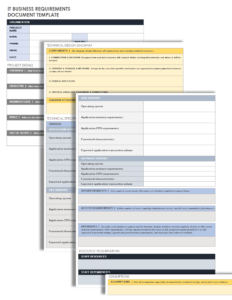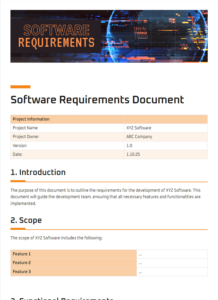An API (Application Programming Interface) is a set of protocols, routines, and tools for building software applications. It specifies how software components should interact and provides a way for different applications to communicate with each other. An API requirements document template is a document that outlines the requirements for an API. It defines the purpose of the API, the scope of its functionality, and the technical details of how it will be implemented.
What Should Be Included in an API Requirements Document Template?
An API requirements document template typically includes the following information:
- API Overview: This section provides a brief overview of the API, including its purpose, scope, and target audience.
- Functional Requirements: This section describes the specific functionality that the API must provide. It should include a list of all the API’s operations, along with their parameters and return values.
- Non-Functional Requirements: This section describes the non-functional requirements for the API, such as its performance, reliability, and security.
- Technical Requirements: This section describes the technical details of the API, such as its data formats, protocols, and authentication mechanisms.
- Testing Requirements: This section describes the testing requirements for the API, including the types of tests that should be performed and the expected results.
Benefits of Using an API Requirements Document Template
Using an API requirements document template has several benefits, including:
- Improved Communication: An API requirements document template helps to improve communication between the business and technical teams involved in developing the API. It provides a common understanding of the API’s requirements, which can help to avoid misunderstandings and delays.
- Reduced Development Time: By using an API requirements document template, developers can start working on the API sooner. The template provides a clear roadmap for the development process, which can help to reduce development time and costs.
- Increased Quality: An API requirements document template helps to ensure that the API meets the needs of the business. By clearly defining the API’s requirements, businesses can help to reduce the risk of defects and rework.
- Improved Maintenance: An API requirements document template makes it easier to maintain the API over time. The template provides a clear reference for changes, which can help to ensure that the API continues to meet the needs of the business.
Conclusion
An API requirements document template is an essential tool for developing high-quality APIs. By using a template, businesses can improve communication between teams, reduce development time, increase quality, and improve maintenance. As a result, businesses can be more confident that their APIs will meet the needs of their customers.

